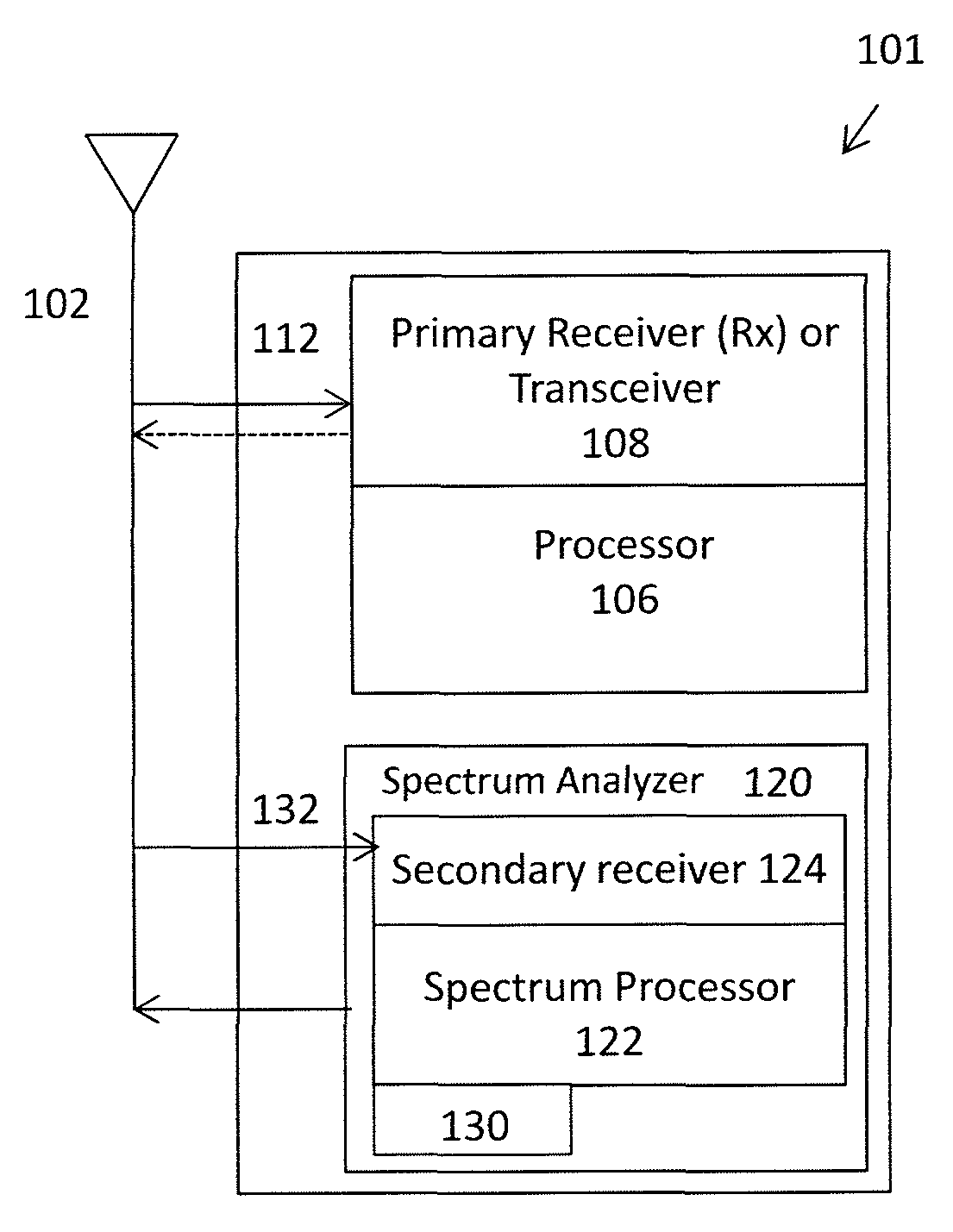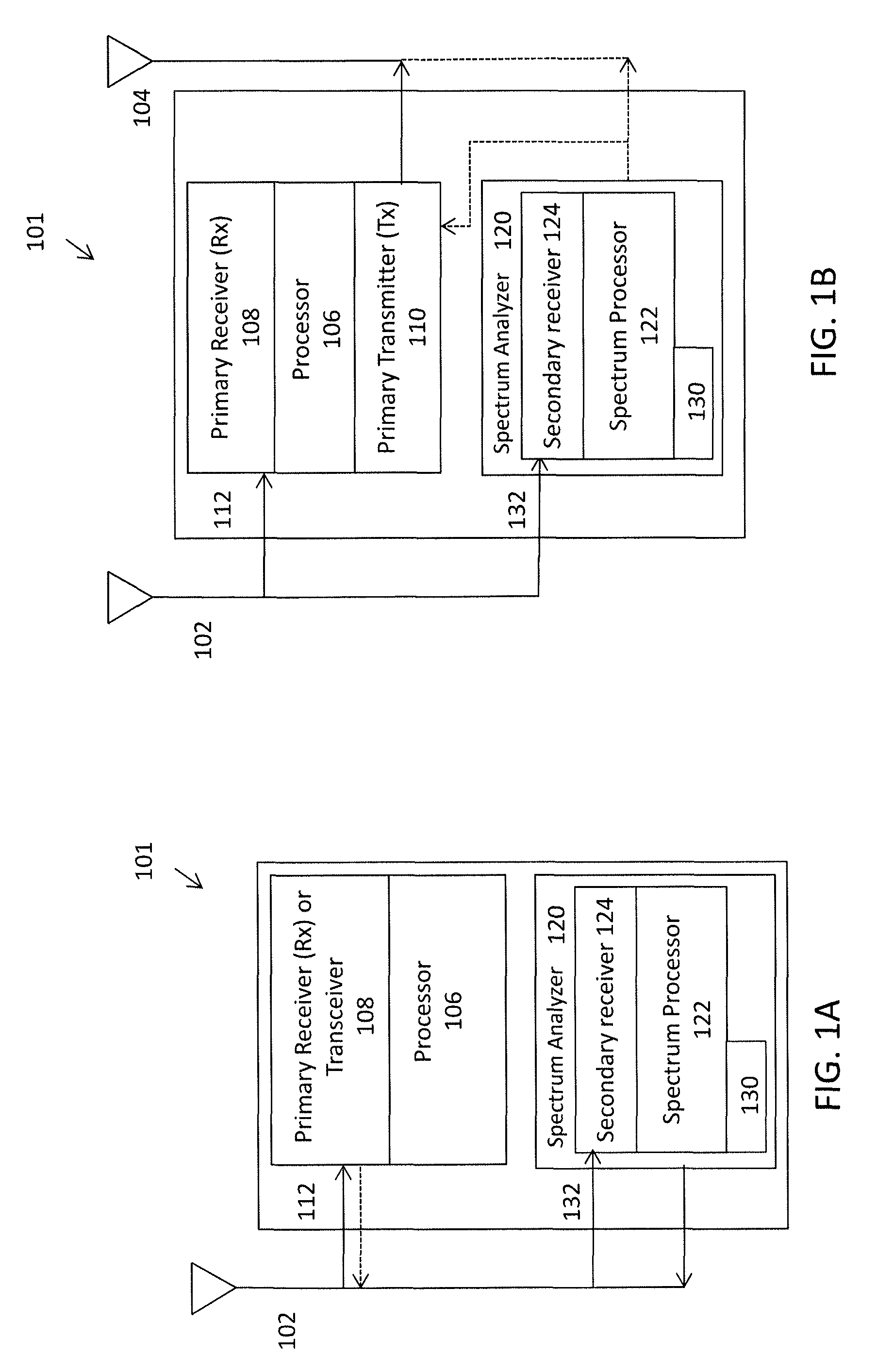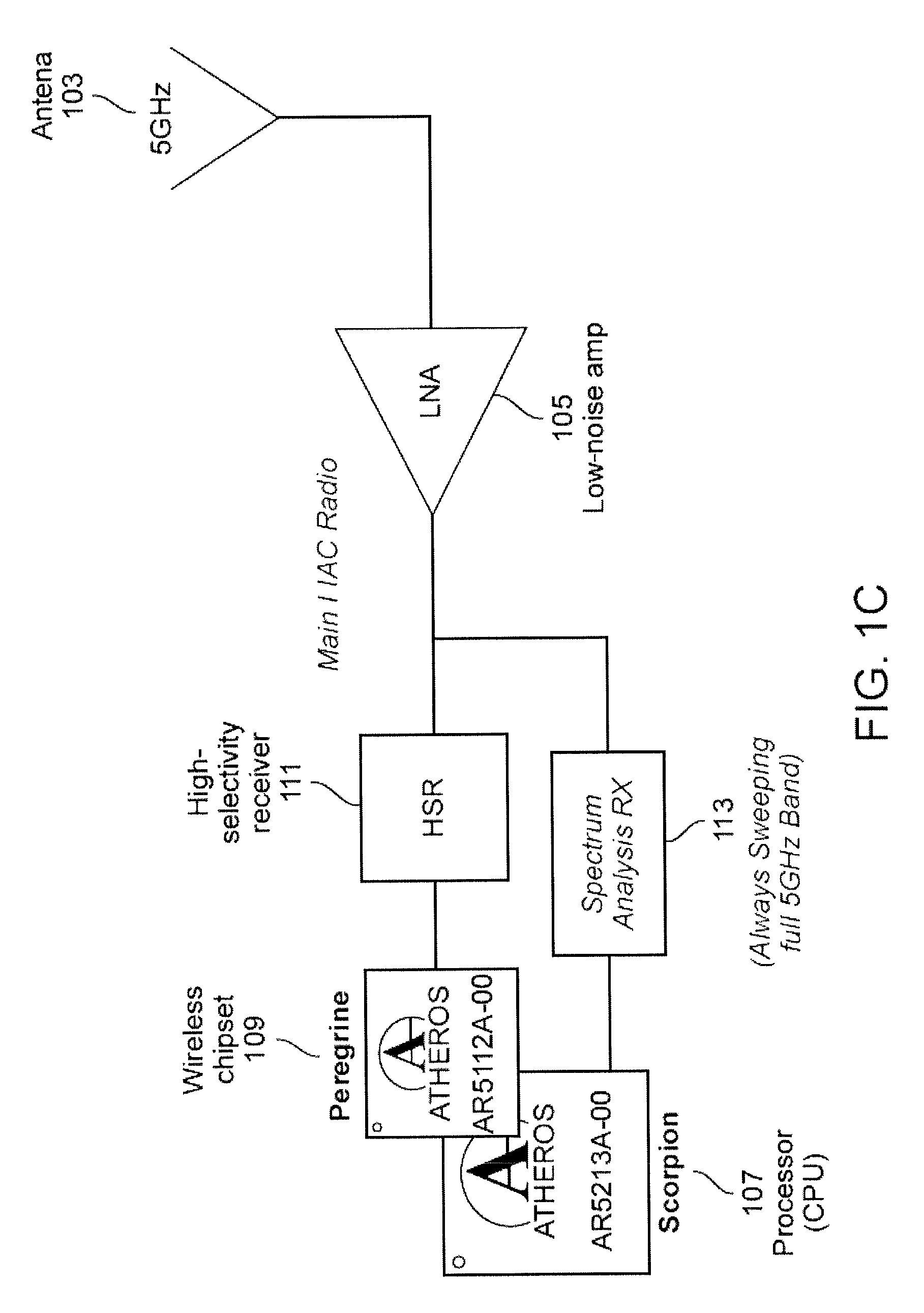Wireless radio system optimization by persistent spectrum analysis
a technology of persistent spectrum analysis and wireless radio system, applied in the direction of transmission, electrical equipment, etc., can solve the problems of difficult optimization and prevention of interference across commercially relevant portions of the electromagnetic spectrum, relative crowded local frequency spectra, and difficult to predict and avoid electromagnetic interference, both natural and man-made sources
- Summary
- Abstract
- Description
- Claims
- Application Information
AI Technical Summary
Benefits of technology
Problems solved by technology
Method used
Image
Examples
Embodiment Construction
[0071]In general, described herein are wireless radio apparatuses that include a first (primary) receiver and a second (secondary) receiver that are connected in parallel, for example, to the same receiving antenna. The primary receiver may be a high-selectivity receiver, and may be configured to receive radio-frequency signals within an operating frequency band. The second receiver may be configured as a spectrum analyzer, that analyzes all or a portion (e.g., at predetermined frequency locations) of the operating band. The secondary receiver typically operates simultaneously with the first receiver, and may operate continuously or periodically (e.g., at regular intervals) to scan the operating band or predetermined portions of the operating band. The second receiver may be controlled by a secondary processor, which may be configured as a spectrum processor for controlling operation of the secondary receiver as a spectrum analyzer.
[0072]For example, FIGS. 1A and 1B schematically il...
PUM
 Login to View More
Login to View More Abstract
Description
Claims
Application Information
 Login to View More
Login to View More - R&D
- Intellectual Property
- Life Sciences
- Materials
- Tech Scout
- Unparalleled Data Quality
- Higher Quality Content
- 60% Fewer Hallucinations
Browse by: Latest US Patents, China's latest patents, Technical Efficacy Thesaurus, Application Domain, Technology Topic, Popular Technical Reports.
© 2025 PatSnap. All rights reserved.Legal|Privacy policy|Modern Slavery Act Transparency Statement|Sitemap|About US| Contact US: help@patsnap.com



